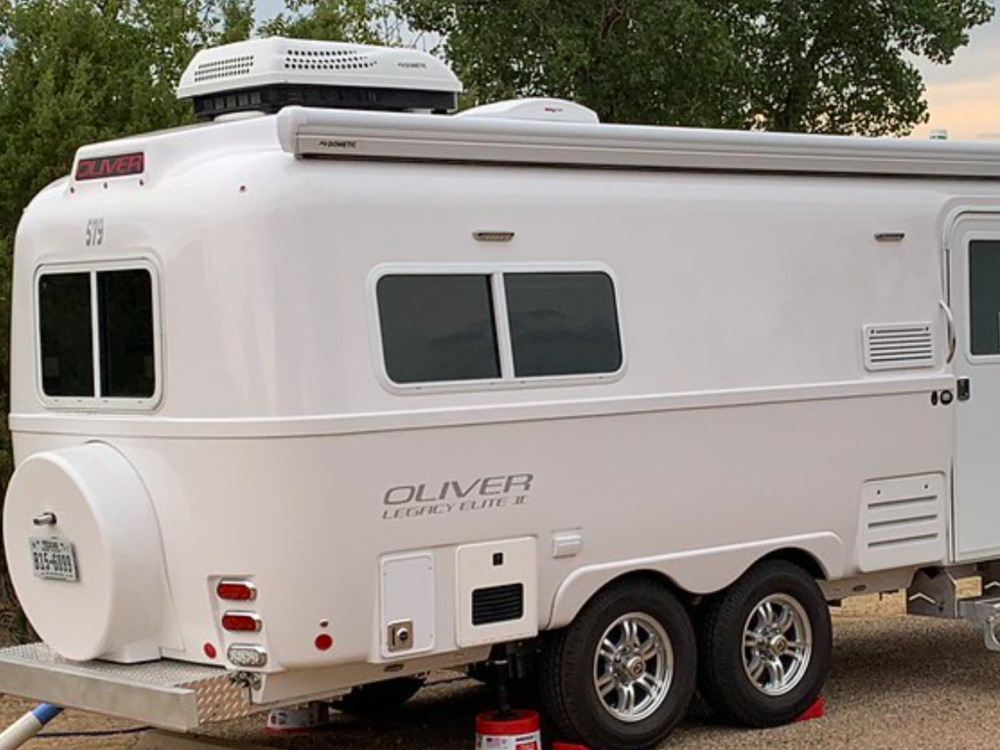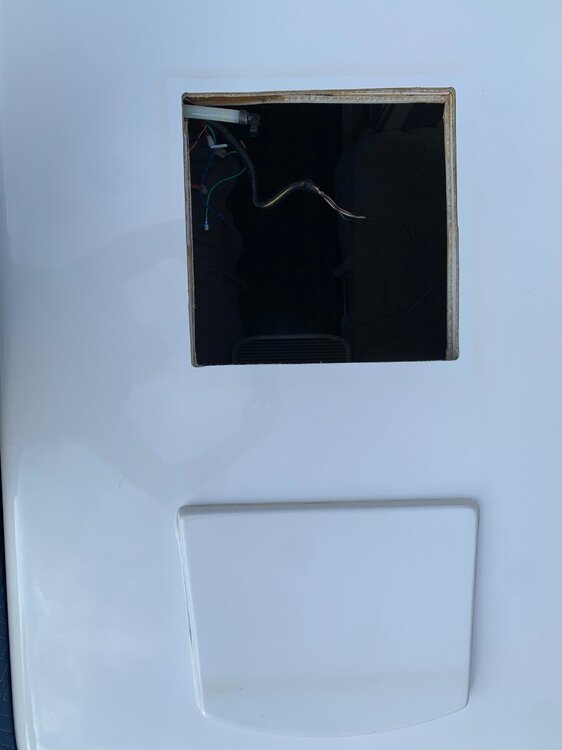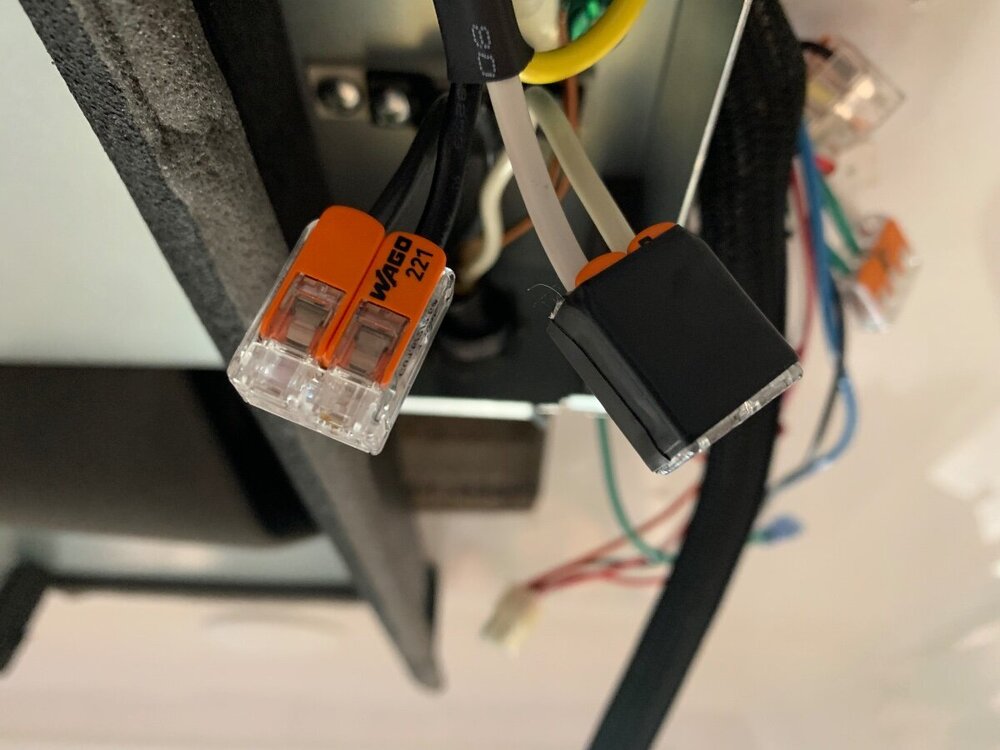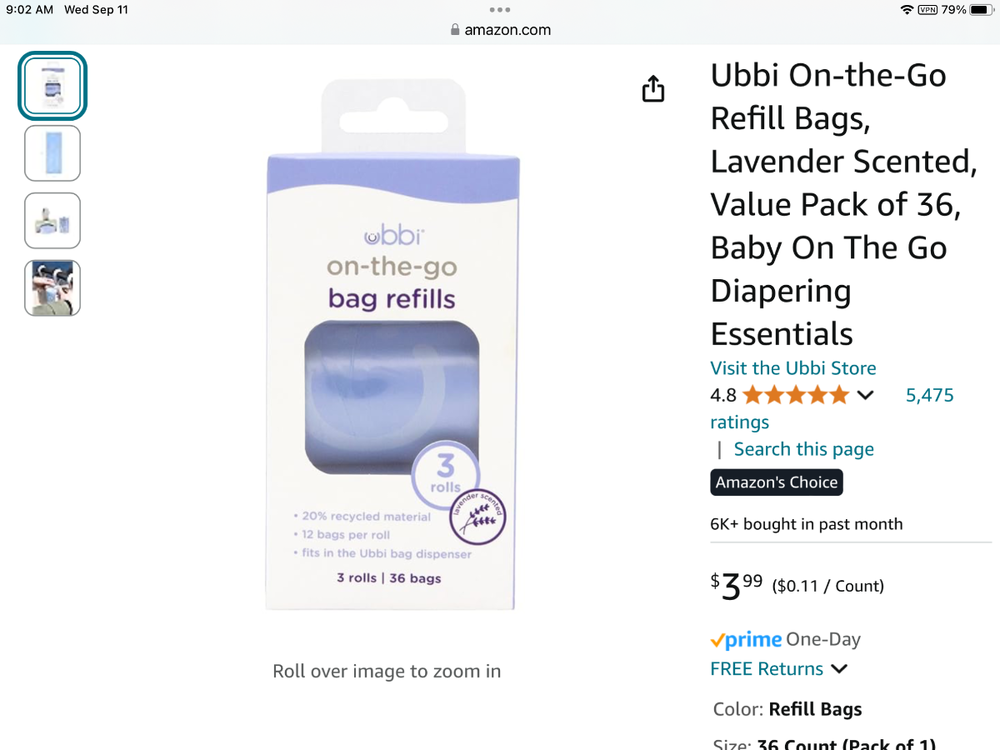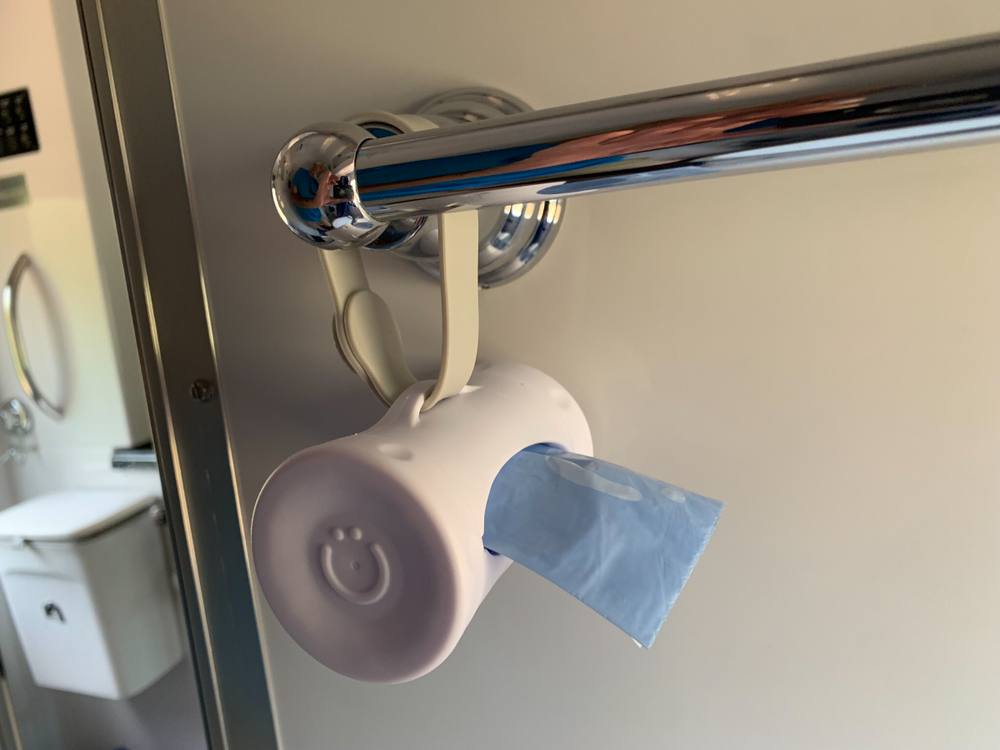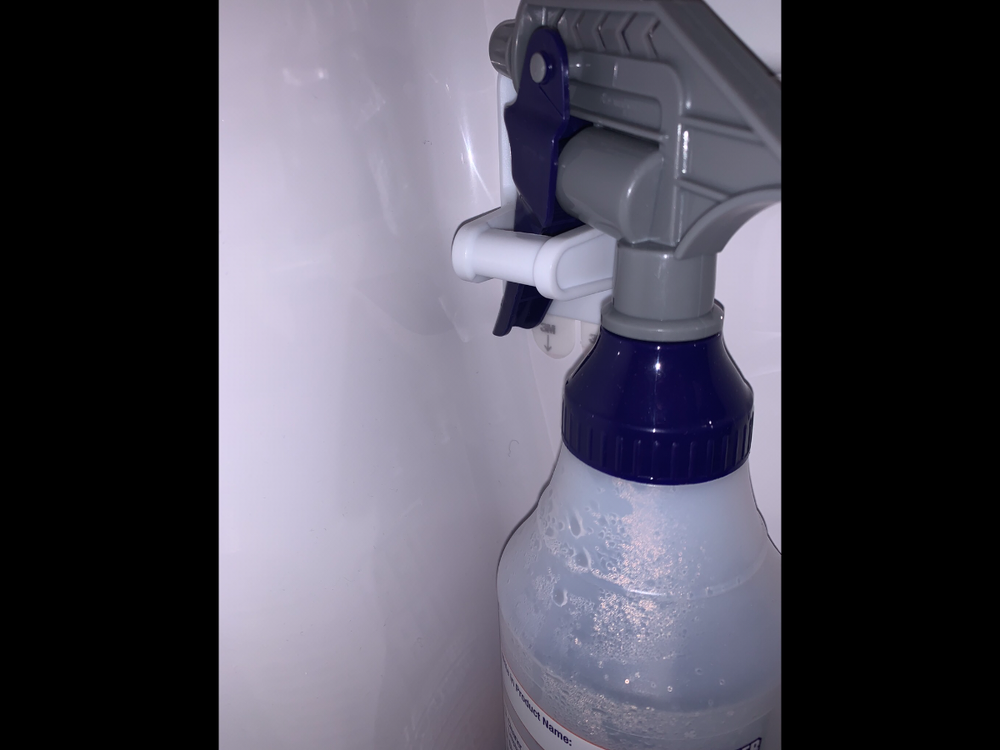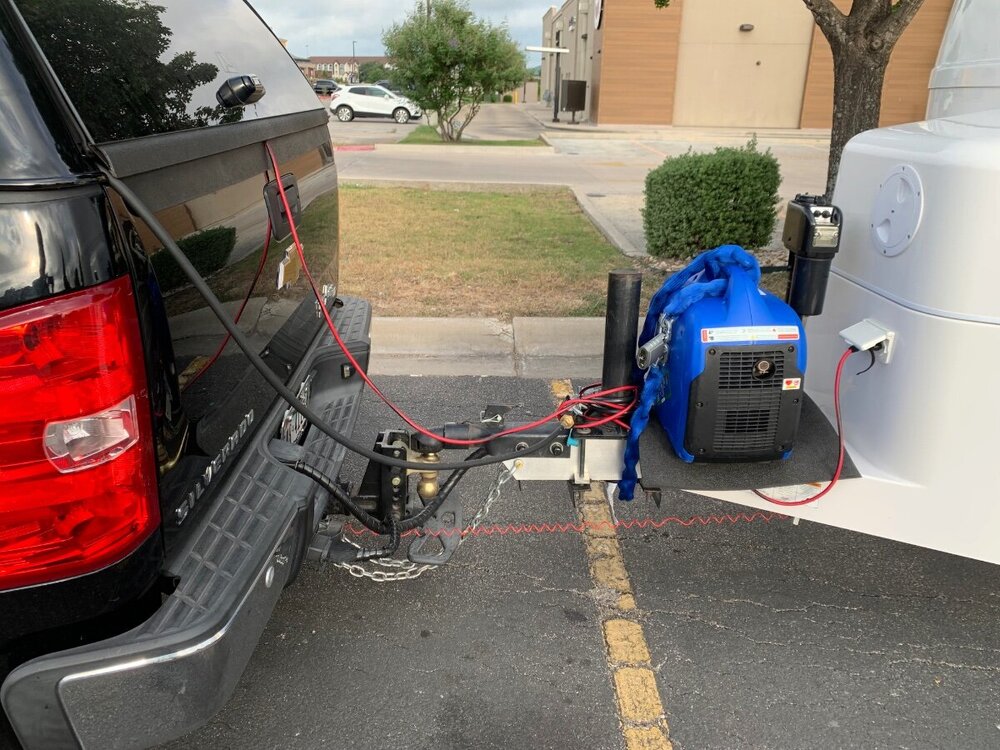
Ronbrink
Member+-
Posts
940 -
Joined
-
Last visited
-
Days Won
23
Everything posted by Ronbrink
-
Just saw this. If the 10A fuse has posed no issues with use of the 100W solar panels, then no need to change.
-
I noticed in review of @rideadeuce’s install post that his 2018 OLEll, #308, with a Dometic 13,500 BTU unit did not have that feature. In his situation the straight piece of self-adhesive foam was placed onto the rear bottom of the Atmos, as I initially did, and served its purpose to support and level. Oliver started installing DPll 11,000 BTU units in my year model (2020), which may have prompted a change over the former 13,500 BTU unit installs.
-
This long awaited swap-mod is now checked off my to-do list! Like many, I tolerated the noisy Dometic Penguin ll long enough; so glad I was finally able to take decisive action with this install. After a couple years of mulling over the various replacement models being marketed, a unit emerged that caught my attention; the newly available Atmos 4.4 seemingly met all of my expectations. I will forego the removal of the Dometic, here is how I proceeded forward: First and foremost, all AC and DC power sources were turned OFF! Scaffolding and equipment/supplies were then staged for Dometic ‘liftoff’ and subsequent Atmos ‘lunar landing’ (only appropriate since I live a couple miles from the NASA Mission Control Center in Houston). Roof area in need of cleaning. Notice the raised fiberglass landing on my year model and that the former condensate drain tube was simply disconnected rather than cutoff. Roof area throughly cleaned and prepped. I decided to adhere the square self-adhesive foam roof seal directly onto the fiberglass and then apply non-leveling Dicor around the cutout perimeter to further ensure the best seal possible. In positioning the foam seal, care was taken to center it as evenly possible, thereby allowing about 1/4-3/8” of exposed fiberglass to lay a bead of the Dicor and finger smooth to finish. Interior view of the Atmos being positioned over the roof cutout. Note the use of the mounting bolts as a guide, as recommended by SDG. Because the ‘rough cut’ edges of the layers of fiberglass (inner and outer hulls, and spacial filler) were inconsistent, I used the foam seal as a reference to accurately center and align the unit; distances measured to each respective bolt. Initially, installation instructions were followed by adhering the supplied straight piece of self-adhesive foam onto the bottom of the unit as a rear support, but it did not make contact with the roof due to relief of the aforementioned fiberglass landing. Alternatively, the foam piece was cut in half and each adhered onto the fiberglass, in like manner as the square seal, along the outer edges of said landing. This adaptation proved very effective in application and purpose, as the last of the next three pics demonstrates. Now that the exterior unit is properly positioned and supported, it’s back inside to further installation. As a side note, I made use of a portable a/c to buffer the heat and humidity of the day! Although my son helped with the heavy lifting and positioning, I cut him loose and completed the remaining tasks solo. Before proceeding, I used foil tape to treat the end of the aforementioned condensate drain tube and secure it to the side. Next the installation of the fabric air plate duct subassembly was started (provided Dreiha Atmos 4.4 Manual details the process). Note I used foil tape on both the upper (at Atmos bottom) and lower (at mounting frame) duct plates, even though most installs viewed applied to the mounting frame plate only. Between the upper and lower duct plate installs, the ceiling assembly mounting frame was bolted in place and hand torqued using a screwdriver only (torque specified in Manual). The AC power connection was very straightforward. The ceiling assembly’s junction box cover was removed, a strain relief fitting installed at one end (the other end had a preinstalled protector) and respective wires routed inside. I reused the Wago Lever-Nuts from the Dometic install, but first tinned the stranded wires of the Atmos lead for optimum assurance in application; electrical tape was used to further secure the Wago connectors. Ground wires were secured per the Manual. The junction box cover was then replaced, DC thermostat wire bundle loom wrapped and tucked away for future use, and ceiling grille fastened in place. . I’m very pleased with this mod, quality of the Atmos and ease of installation! I should mention that SDG preinstalled a SoftStartRV. I will provide an update once the furnace wiring and thermostat mount is completed. A special shoutout to @rideadeuce for forging the way with his install of an Atmos!
- 134 replies
-
- 16
-

-

-

-
@Patriot I can’t help but think that these MSRP markdowns to a lower NO HAGGLE PRICE as anything more than a marketing gimmick!
-
Beech lane levelers for for Legacy Elite II
Ronbrink replied to TxMN2020's topic in Mechanical & Technical Tips
The Beech Lane and Anderson brands of levelers look to be the same in appearance and design other than in color, black and red, respectively. Although there is a diverse selection of levelers available, this tear drop ramp-type leveler pairs well with OTTs, especially when used in conjunction with a cell phone app leveling systems as @Patriot and @jd1923 refer. Reason being these systems will indicate if leveling adjustment needs to occur side-to-side, then the leveling ramp(s) can be positioned on the side to be raised and vehicle driven onto them until level according to the app. Set the TV emergency brake, position the wedge(s) of these setups, detach trailer, complete front-to-back leveling per the app utilizing the forward stabilizing jack. -
Actually, great idea! I have a Renogy 40A DC-DC and run my a/c on LFPs via inverter while underway quite often; the total amp draw by the a/c is offset by the output of said charger. I should mention, no solar. In some instances, owners run for long duration to keep pets comfortable inside the Oliver when in transit. The only problem I’ve experienced was an aging alternator in my TV; the vehicle battery was not being properly maintained, but installation of a new high output alternator resolved that issue.
-
Saturday’s install was a success! Soon I will post ‘Dreiha Atmos 4.4 Home Install’, but for now a few pics. BTW, sitting in the Oliver at home enjoying my morning coffee, Atmos whisper ‘cool’; I can actually hear myself thinking of things to come!
-
Fun fact, Airstream once had a trailer that was painted white called an Argosy.
-
An all too common experience for Oliver owners, but then it’s nice to be noticed! I also get “Is that a Casita?”, it’s easy to point out the similarities; but then someone once asked “Is that an Airstream?”, to which I had no reasonable response!
-
The OPD safety valve built into the selected propane tank may have inadvertently been tripped, thus flow can be fully or partially restricted and prevent ignition at the refrigerator. This can be caused by opening the tank valve too fast, best to slowly open for the first 1/4 turn then proceed to fully open, or a line was open and the OPD sensed a leak and shutdown. You may first try switching the regulator to the other tank to see if adequate pressure is then available to ignite at the refrigerator. Did you by chance check pressure at the cooktop to see if it would ignite? You might try before switching the regulator, that could be telling. Now, if you end up switching the regulator to the other tank and still have issue, that tank’s OPD may have tripped, as well. If the problem persists, you can next try resetting the OPDs by first turning the tank valves completely off, then remove the hose pigtail tank connectors from each; subsequently reconnect the pigtails after checking that no lines are open. Now open each respective tank valve as suggested above and see if the fix is in (refrigerator ignites). Good luck!
-
The smaller box in the background.
-
Currently targeting this coming Saturday, been dodging outer bans of scattered rainfall from Francine’s havoc with our coastal neighbor. I’m prepared, maybe too much so; totally bought into @MAX Burner’s “One is None, Two is One” and @Patriot’s “Two is one and one is none” concepts. May strap the spare Atmos to the rear bumper!
-
@rideadeuce I’m nearing time of installation for the Atmos and have seen several methods for affixing the square roof seal. In your application, the foam seal was first adhered on the unit and then a bead of Dicor on the fiberglass around the roof cutout. Did you specify or was it SDG’s preferred method of choice? I’ve seen use of double-sided Eternabond Tape in similar manner with other installations (SOBs), as well as first adhering the roof seal directly to the roof with no sealant applied between the seal and unit; claim being water will never reach the top of the gasket.
-
-
Wet-bath Sink Faucet Modification - September 2024
Ronbrink replied to NomadLife's topic in Ollie Modifications
I lucked out when installing the High Sierra shower head several years ago, happened to have a Kohler adapter that mated the stock hose to this upgraded handle. In ordering, don’t get too hung up on which flow restricter to choose (go high), the push button control valve can easily be used to reduce flow, as desired. The button is great for Navy showers, no more having to use the sink valve to regulate water flow and temperature; the button’s trickle feature keeps the water temp constant so no more waste of water having to reset, thus less volume in gray tank. As a sink faucet, I use the button to allow a reduced stream of water rather than full flow when the valve is opened, further saving water and tank volume. This product is a jewel of an upgrade, get one! -
We no longer put TP in the black tank; reduces waste volume, less water to flush toilet, and dumping the black tank is much easier and faster. Here’s a couple of ideas: Personal scented waste bags, disposed of as needed. These bags and dispenser are marketed for use in managing baby diapers when on the go and are inexpensive. Handy spray bottle for final bowl rinse, as needed. Amazing how much less water is required, thus further reducing black tank volume.
-
Running the Truma AC when boondocking
Ronbrink replied to silversportsman's topic in Mechanical & Technical Tips
I’ve heard that before about the Truma needing a soft start, hopefully there will be a more feasible solution on the horizon. There was no upgrade option for a/c with my 2020 OLEll other than adding a soft start, which I decided to DIY to save some $$. Also, I was disappointed Oliver started using the Dometic 11,000 rather than 13,500 BTU unit in my model year. Although it does the job, Texas heat has often left me wishing for the heftier version. And then there’s the noise issue, which is why you and so many others went the Truma route! I have never considered switching to the Truma, mainly because of the high cost, but have plans to dump the ‘noise maker’ and up the BTUs. My replacement of choice is the Atmos 4.4; 15,000 BTU a/c, 12,000 BTU heat pump; more energy efficient and quieter! We’ll see. Regarding the use of your generator, have you tried the ECO mode? I seem to recall others reporting ECO allowed use with a/c operation, but that may be for the Dometics. -
Running the Truma AC when boondocking
Ronbrink replied to silversportsman's topic in Mechanical & Technical Tips
A Jackery 2000 pro will not run any air conditioner, better suited for small AC appliances or DC supply/charging purposes. Yes, a small dual fuel inverter generator can be used to power the Truma, at minimum 2200W. I carry a dedicated 30# propane tank under cap, which will provide up to twenty hours of a/c comfort for long evening/night periods of cooling. Once that supply is exhausted, I can tap into one of the OTT-mounted propane tanks unless time is taken to refill. I stage the genny on the tongue of the trailer secured with a chain. I primarily use this setup for overnight stays while underway to a campground that has power service. Depending on how an Oliver is wired dictates whether or not the Truma can be used via the inverter. I had to install a dedicated transfer switch to be able the run on DC. If capable, then solar and/or a small generator will sustain limited use of the a/c in actual boondocking situations. -
You may want to present your question in Mechanical & Technical Tips of the forum for a better chance of response.
-
Xantrex Inverter Issues? Try a Hard Reboot
Ronbrink replied to Rivernerd's topic in Mechanical & Technical Tips
@jd1923 I installed a Victron SmartShunt along with the LFP upgrade to the Oliver, as well as one in my portable power station, which has dedicated solar. The VictronConnect app is a great tool for monitoring our DC systems! -
Xantrex Inverter Issues? Try a Hard Reboot
Ronbrink replied to Rivernerd's topic in Mechanical & Technical Tips
There is an app for use with the Xantrex BT remote only, not the standard Freedom X as in my year model. With the BT remote, the app is of benefit in better dialing in settings with ease, not sure how it would compare to that of Victron beyond that. -
Xantrex Inverter Issues? Try a Hard Reboot
Ronbrink replied to Rivernerd's topic in Mechanical & Technical Tips
The On/Off feature of my Freedom X remote stopped working several months ago, maybe even longer but just didn’t notice. Last month I bought a new replacement on Amazon and attempted the pairing procedure upon install, but the new unit didn’t resolve the issue so it was returned. I have in the past and am currently now leaving the Xantrex turned On full time by way of the units power control button. From all I have read, there is no problem leaving it On, other than the continual draw on the battery(ies) when not connected to shore power. The only downside when on shore power, if the power is lost one may not be aware of a switch to DC and find a low battery situation. -
As some may recall, I have dealt with an issue regarding the ‘charging aspect’ of my Xantrex XC 2000; specifically its’ inability to keep my LFP battery bank at full charge when in storage on shore power. When first powered up, the Xantrex will provide an initial charge cycle, but thereafter no further charge maintenance; thus requiring a weekly visit to the Cow Barn to manually instigate another initial charge cycle to bring the bank up to par. In talking with a Xantrex tech on this matter back when, I was told the unit was likely defective and in need of replacement. No bueno! Since no issues with the ‘inverter aspect’ I opted to install an independent dedicated Cerbo/charger combo to satisfy my charging needs, which has been working great! Problem solved, right? Here’s a recent observation! In looking at the following chart provided upon request by Oliver, notice in particular Settings 20, 22 and 23. (Disregard the text statement at the bottom of chart). This chart is representative of most I’ve seen, updated to address the various recommended Xantrex settings for both Oliver models per battery type. However, I recently learned why Settings 22 and 23 are blacked out and that a charging profile can be customized via these settings, following a change in Setting 20. When scrolling through Setting 20, I selected USE (User defined) rather than LFP(LiFePo), as illustrated above. In doing so, I was then able to access Settings 22 (Custom Absorption Voltage) and 23 (Custom Float Voltage). In general, most LFP manufacturers will have an absorption value ranging from 14.2-14.6 volts; a float value may or may not be provided since not really needed for that battery type. Given I now have LFPs, the custom values entered in my application were 14.6 and 13.6, respectively. As best I can tell, making the above changes to these three settings caused the ‘charging aspect’ of my Xantrex to operate as designed. My battery bank has been maintained at 100% for the past several weeks since, which is in keeping with claim that the Xantrex ‘uses a multistage charging process to keep batteries at full charge when connected to shore power’. Go figure!
- 1 reply
-
- 4
-

-

-
Victron Orion 50 amp DC/DC charger non-isolated Part 1 of 2
Ronbrink replied to rideadeuce's topic in Ollie Modifications
That was exactly what I did. Used a light and mirror from within the forward dinette seat hatch to eyeball a prospective point of entry; care must be taken to avoid existing plumbing. Once identified, a 1/8” drill bit was used from outside taking care to only penetrate the hull thickness. Then another look from within to verify a clear path with no obstruction for a larger hole to run the cables.

